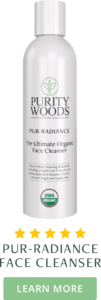Licorice root extract is one of the best natural ingredients for making skin look brighter. It’s full of powerful compounds that work deep within your skin to cleanse, renew, and even out your complexion.
Unlike other brighteners that tend to be harsh on skin, licorice root is soothing and generally tolerated by even the most sensitive skin. It also has the advantage of being a 100% natural ingredient if you are looking to get toxic chemicals out of your skincare products.
Here’s more on what licorice root extract is, how it can help your skin, and how to use it.
What is Licorice Root Extract?
If licorice root extract makes you think of a divisive black candy, you aren’t far off the mark. The same plant (Glycyrrhiza glabra or G. uralensis) that produces licorice – the skincare ingredient, is also where the original licorice candy came from.
Licorice plants are native to regions in Europe and Asia. Their roots have been used in traditional medicine for thousands of years. Because of their intense sweetness (30 to 50 times that of sugar!), they were also used to make the very first love-it-or-hate-it black licorice candy.
(Of course, nowadays black licorice is usually made with anise extract or synthetic flavoring.)
To use licorice for skincare, the stick-like roots of the plant are carefully harvested. Then, a standardized extract is made that contains the main active compounds present in the plant. This extract is rarely used on its own for the skin but can be added to many types of skincare products.
Ancient Medicine, Modern Skincare
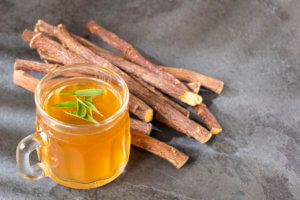
Licorice root extract isn’t just beneficial for your skin. It has an incredibly rich history of use as a medicinal herb in multiple cultures.
Perhaps the most interesting example is traditional Chinese medicine (TCM). In TCM, licorice root is used for many ailments, including coughs, colds, and digestive issues. But more importantly, it’s considered a “guide herb” that enhances the action of other herbs.
If you use or study TCM herbal formulas, you’ll see that many contain licorice root in small amounts. This is both to enhance flavor and because of its guiding effect. Interestingly, modern research offers some evidence in favor of licorice’s use as a “guide”.
Outside of TCM, licorice root has also been used in western and European herbalism as well as Ayurvedic medicine. It’s considered an adaptogen that soothes tissues in the throat, lungs, and digestive tract and nourishes the adrenals.
The transition of licorice root from traditional medicine to modern skincare likely came about due to research on the powerful compounds it contains. As you’ll find out, several key plant compounds play a big role in making it highly effective.
Licorice Root Extract for Skin: Key Compounds
Though licorice root contains hundreds of plant compounds, there are three specific ones that stand out for their skincare benefits. Understanding a little about each one will help you to see why the extract is so powerful.
- Glycyrrhizin— Glycyrrhizin is the main active compound in licorice root extract. It’s responsible for the sweetness of the root and has shown antioxidant, anti-inflammatory, and antimicrobial properties in studies. When consumed in large amounts, glycyrrhizin can cause side effects like raising blood pressure and reducing potassium levels. Thankfully, you don’t need to worry about this with topical application.
- Glabridin— Glabridin is another key compound found in licorice root. It’s technically known as an isoflavonoid (a type of antioxidant) and has its own anti-inflammatory properties. Notably, glabridin has proven to be one of the best substances for brightening the appearance of skin (more on that soon).
- Licochalcone A— Licochalcone A is yet another antioxidant compound. It is powerful enough to have shown anticancer potential in studies and even antimalarial activity. For the skin, this compound has protective properties that help mitigate the effects of UV damage.
This should already start to give you a picture of what licorice root extract can do for skin, and you’ll see these compounds mentioned more than once later on.
Now, here’s more on the specific benefits of licorice that deserve to be highlighted.
Top Benefits of Licorice Root Extract for Skin
Fades the Appearance of Hyperpigmentation
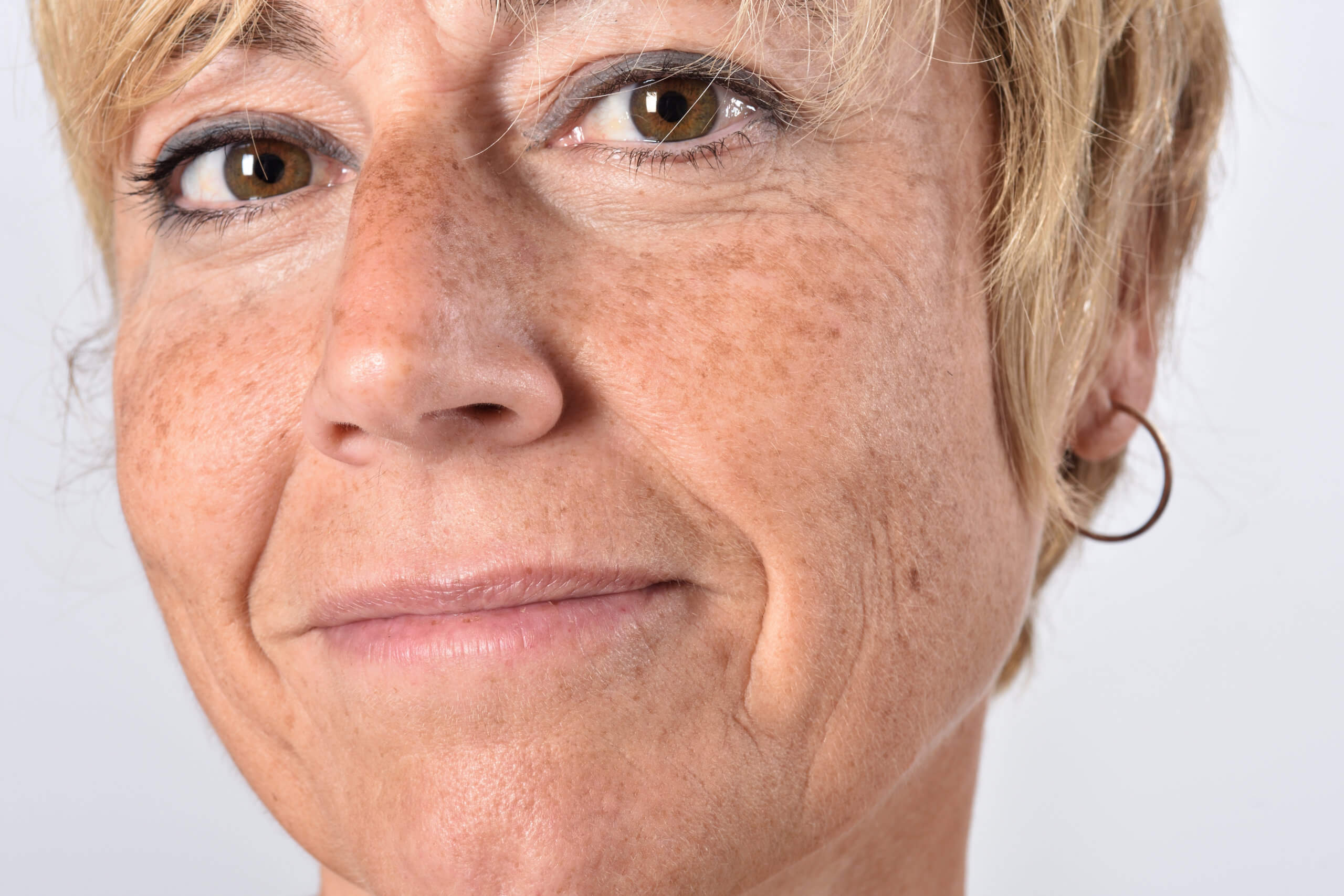
Hyperpigmentation is one of the most frustrating aspects of skin aging. It shows up as dark spots on the skin— spots that are very noticeable against the lighter skin surrounding them.
Most often, hyperpigmentation is the result of overexposure to sunlight.
When your skin gets exposed to the sun, it produces a pigment known as melanin, which is what gives you a tan. Normally, melanin fades once you stop going out in the sun. However, too much exposure over time leads to spots of melanin that don’t fade, called age spots or dark spots.
Another common example of hyperpigmentation is the spots or “scars” left behind by acne and other skin conditions.
Licorice root extract combats many types of hyperpigmentation, specifically by dispersing melanin left in the skin. This is mainly due to the effects of the compound glabridin, which some research has shown to be 16 times more effective at brightening skin than hydroquinone, a common (but harsh) lightening agent.
And though licorice is powerful on its own for fading the appearance of dark spots, it works even better with other skin-brightening ingredients like vitamin C. You may want to use it in a combination skin treatment for the quickest results.
Helps Inhibit Further Pigmentation
A huge bonus of using licorice root extract for skin pigmentation is that it may help prevent more dark spots from forming.
As mentioned, dark spots that form as the result of sun exposure (or more technically as the result of UV exposure) come from melanin “patches” that don’t fade. Essentially, this happens because of an overproduction or a clumping melanin, although the exact cause is up for debate.
Whatever the underlying mechanism is, the important point is that the glabridin in licorice root doesn’t just work on melanin after it’s already there. Glabridin also helps to stop melanin clumps from forming.
In fact, research has shown that glabridin can help prevent UVB-induced pigmentation. It does this specifically by inhibiting the activity of tyrosinase, an enzyme that works as a catalyst for melanin production.
This means that licorice root extract can diminish the appearance of dark spots and keep your skin looking brighter (and younger) for longer.
Protects Your Skin with Antioxidants
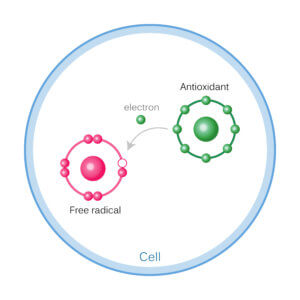
The importance of supplying your skin with antioxidants cannot be overstated. Antioxidants are the best protectors against one of the most prevalent age-accelerators: free radical damage.
Your skin is exposed almost constantly to a variety of stressors, including UV radiation, environmental pollution, and chemicals in household products. All of these are potential generators of free radicals, which are unstable molecules that damage skin cells and contribute to premature skin aging.
You may not know this, but your skin already has its own network of antioxidants that neutralize free radicals. However, this network can get depleted over time, particularly if you aren’t deliberately renewing it.
Fortunately, licorice root extract has several antioxidants with protective effects for skin. They work to renew your skin’s defenses and hold off signs of aging.
Glycyrrhizin is one of these antioxidants as is glabridin, but Licochalcone A is the one that really deserves the spotlight.
Not only does Licochalcone A have antioxidant activity, it has specifically shown an ability to help protect your skin from UV damage in studies. This is huge because damage from UV radiation is the number one cause of premature skin aging AND generates free radicals.
Researchers even went so far as to call Licochalcone A a potential “skin cancer chemopreventive agent”!
Soothing for Sensitive or Irritated Skin
One of the most outstanding aspects of licorice root extract is how gentle it is on skin. Despite its powerful effects, even those with sensitive skin generally don’t experience any irritation.
Part of the reason for this is the anti-inflammatory properties licorice root brings to the table. Glycyrrhizin and glabridin both possess anti-inflammatory effects. They help to calm red or inflamed-looking skin and reduce any irritation.
Licorice root and its extract also have demulcent properties, which further explains its soothing ability. Demulcent botanicals contain mucilage that eases hot and irritated tissues (like in your skin) when it comes into contact with them.
In fact, there’s good reason to believe that licorice root is beneficial for inflammatory skin issues like eczema and dermatitis.
At least one study has shown that the extract can reduce redness, irritation, and itching, especially when used in gel form. The same goes for sensitive skin and everyday inflammation.
Cleansing for Skin
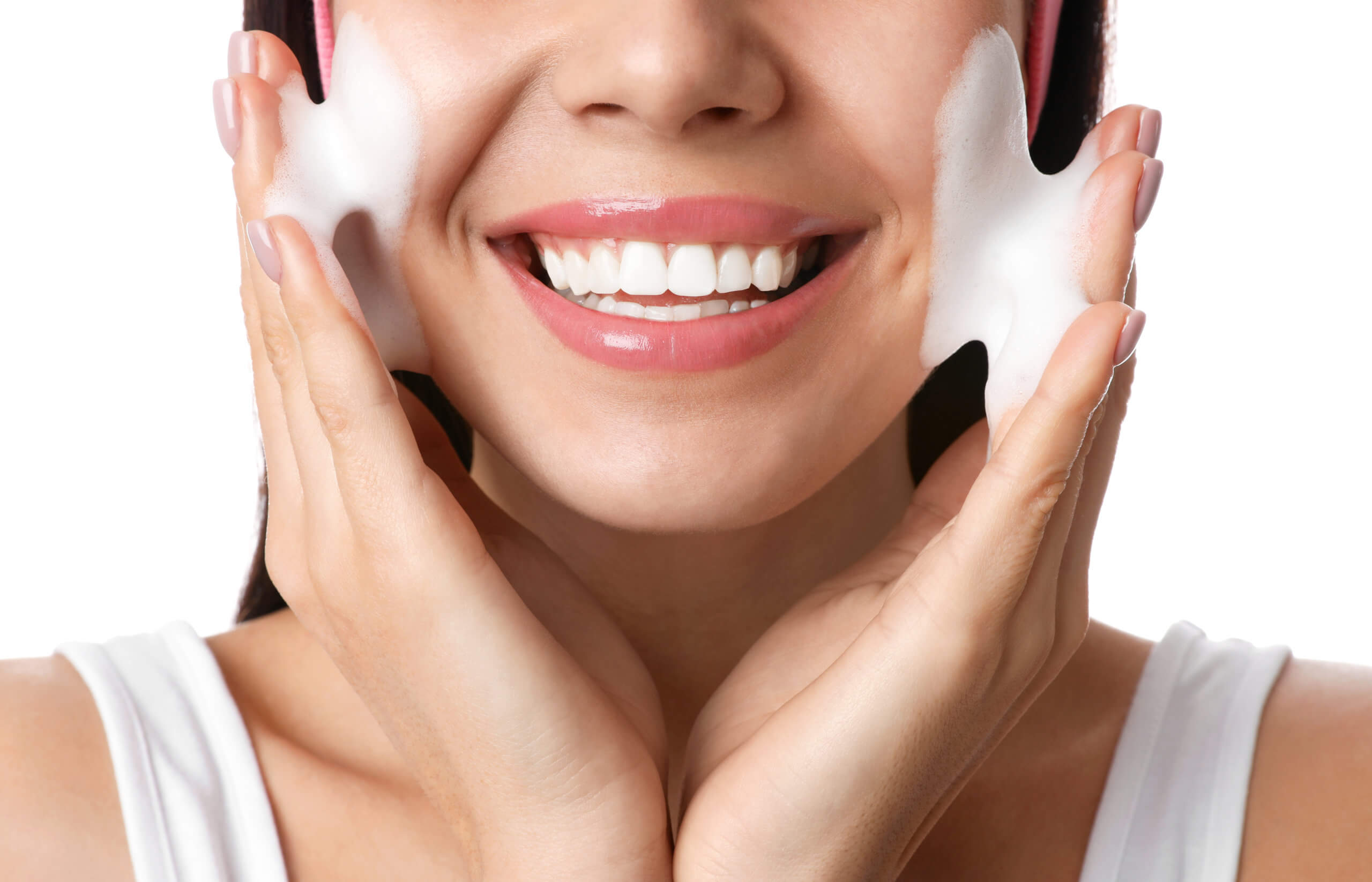
Licorice root extract can be an excellent skin-cleansing ingredient. Not only does it help to brighten and soothe skin, it also possesses antimicrobial properties that may keep your skin’s microbiome in balance.
This time, it’s mainly glycyrrhizin that brings the antimicrobial power, although other compounds also contribute. The extract hasn’t yet been tested against a wide range of potentially harmful skin microbes, but it has been shown to inhibit certain Candida species and some bacteria.
The demulcent properties of licorice root also help bring balance to a cleanser by ensuring that your skin doesn’t get dried out while you wash it. This is very important because cleansers that strip your skin of natural oils are very damaging in the long run.
May Help Protect Elastin
There are two very important anti-aging proteins in your skin: collagen and elastin.
While collagen can be thought of as a plumping protein that helps to fend off wrinkles, elastin is more of an “anti-sag” protein. It’s responsible for giving your skin elasticity, which means an ability to bounce back after being stretched. This is what keeps it from giving way to gravity and looking saggy.
Unfortunately, the elastin in your skin declines with age. One of the reasons for this is the action of an enzyme known as elastase that accelerates the breakdown of elastin.
There are few known skincare ingredients that can boost elastin, although maple leaf extract is by far the best.
However, there’s some indication that licorice root extract may also help to protect the elastin in your skin. This comes from one study indicating that the extract can inhibit the activity of elastase, which in turn helps preserve existing elastin.
Clinical studies are needed to confirm the elastin-boosting potential of licorice root, but this could be a very big breakthrough.
Safe Alternative to Other Ingredients
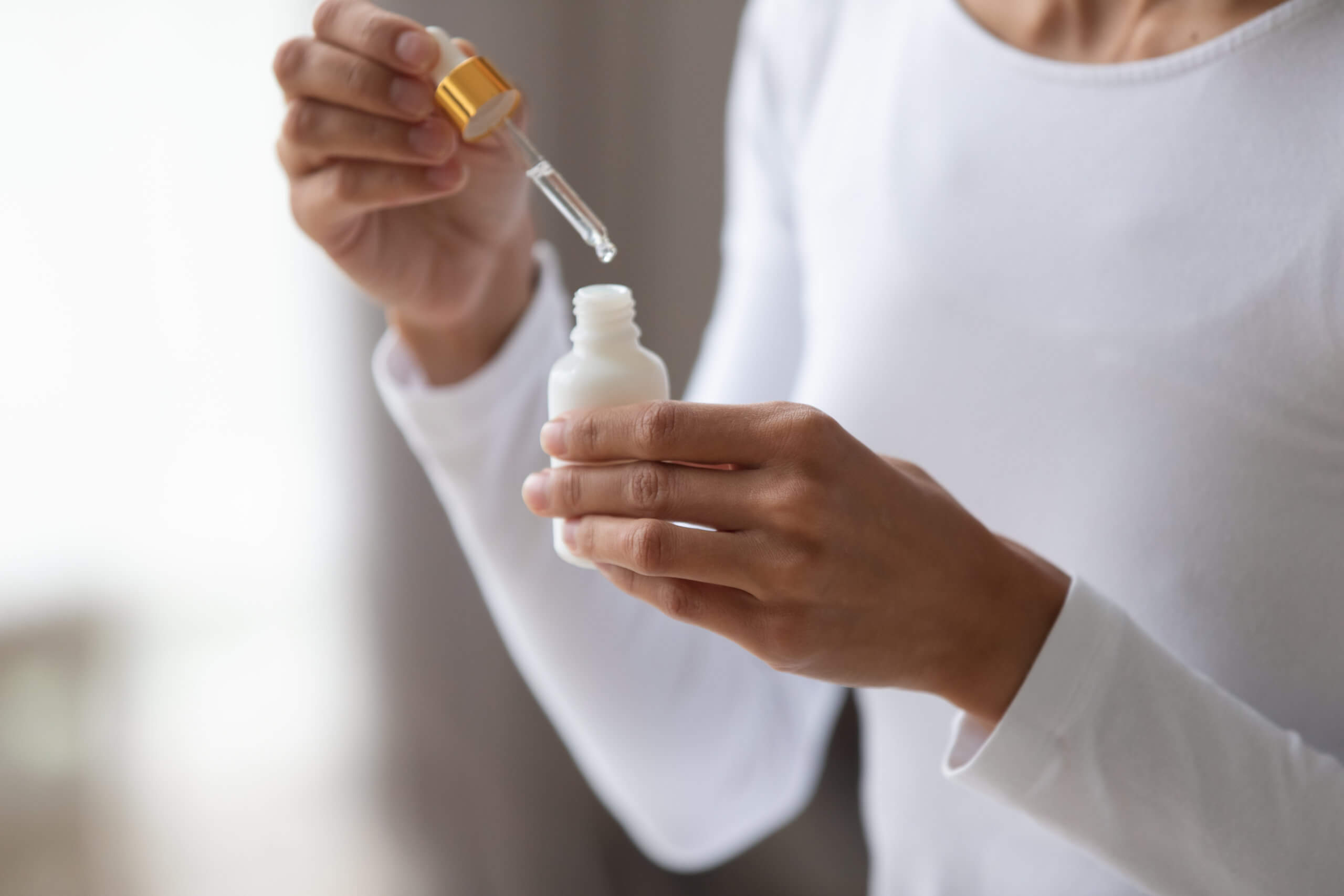
If you are looking for a way to make your skin tone brighter and more even, there are some good reasons to choose licorice root extract over other, harsher ingredients.
There are two other ingredients commonly used to lighten dark spots: hydroquinone and retinol.
Hydroquinone is used almost exclusively for skin brightening. It’s available as both an over the counter (OTC) and prescription product, and the strength varies based on the formulation. The downside is that it’s a potential carcinogen and is banned in other countries like the UK and Japan.
It also comes with unwanted side effects like photosensitivity, irritation, and unwanted lightening effects. (Note: OTC hydroquinone is currently banned in the U.S. indefinitely.)
Retinol is used to fade dark spots as well as address other signs of aging. Unfortunately, it too is harsh on the skin and can cause redness, irritation, and excessive dryness.
So far, licorice root extract has shown none of these side effects and makes a good case for being just as effective as either ingredient. It’s much preferable to hydroquinone, and along with bakuchiol, could be an excellent retinol alternative.
Licorice Root Extract for Clean, Bright Skin
As mentioned earlier, licorice root extract is rarely used on its own for skincare. However, you can find it in many different products: creams, lotions, cleansers, serums, etc.
For the most benefits, look for a product that uses USDA Organic licorice root. This ensures that it was not grown using toxic chemicals, which can leach into the final product and get absorbed by your skin.
And if you are interested in an anti-aging facial cleanser, look into the Pur-Radiance cleanser from Purity Woods. It features organic licorice root extract and other pure botanical ingredients that cleanse and moisturize skin at the same time.
This unique cleanser is also packed full of antioxidant ingredients and elastin-boosting maple leaf extract to promote radiant, young-looking skin. The entire formula is USDA Certified Organic and toxin-free.
Learn more about the Pur-Radiance facial cleanser here and enjoy brighter-looking skin with licorice root!



